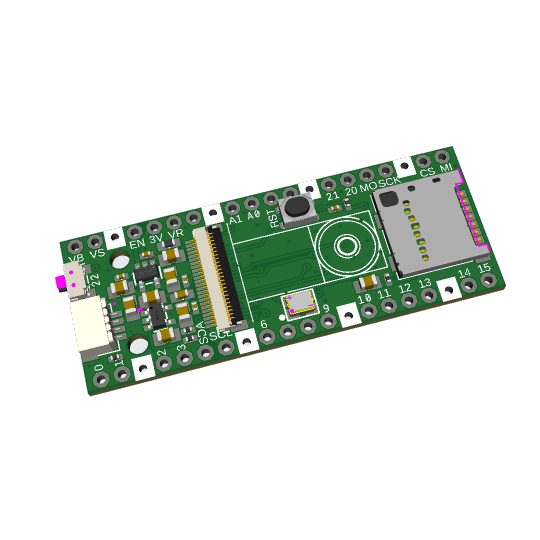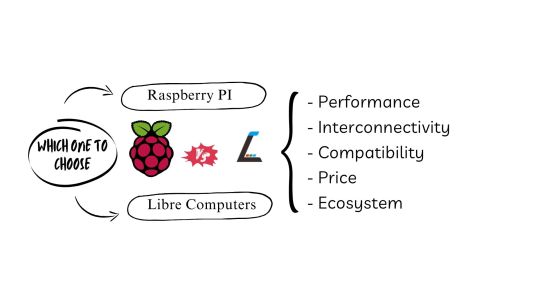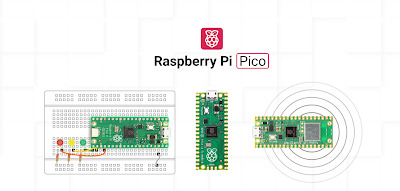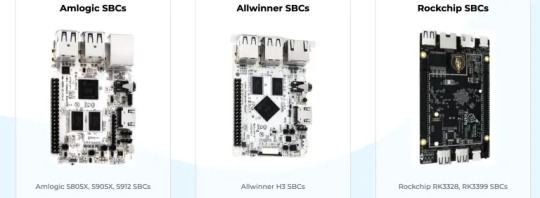#raspberry pi camera modules
Explore tagged Tumblr posts
Text
The high-quality, high-end, auto-focus, 8 mega pixel camera module with Omnivision OV8865 image sensor, it is widely used for many applications, such as smartphones, tablets, PC multimedia, embedded, robotics, drones, medical equipment, artificial intelligence, etc. The key features of this camera include MIPI interface, 8MP resolution with Omnivision OV8865 image sensor, high-quality image with high performance and low power consumption.
0 notes
Text
Transforming Vision Technology with Hellbender
In today's technology-driven world, vision systems are pivotal across numerous industries. Hellbender, a pioneer in innovative technology solutions, is leading the charge in this field. This article delves into the remarkable advancements and applications of vision technology, spotlighting key components such as the Raspberry Pi Camera, Edge Computing Camera, Raspberry Pi Camera Module, Raspberry Pi Thermal Camera, Nvidia Jetson Computer Vision, and Vision Systems for Manufacturing.

Unleashing Potential with the Raspberry Pi Camera
The Raspberry Pi Camera is a powerful tool widely used by hobbyists and professionals alike. Its affordability and user-friendliness have made it a favorite for DIY projects and educational purposes. Yet, its applications extend far beyond these basic uses.
The Raspberry Pi Camera is incredibly adaptable, finding uses in security systems, time-lapse photography, and wildlife monitoring. Its capability to capture high-definition images and videos makes it an essential component for numerous innovative projects.
Revolutionizing Real-Time Data with Edge Computing Camera
As real-time data processing becomes more crucial, the Edge Computing Camera stands out as a game-changer. Unlike traditional cameras that rely on centralized data processing, edge computing cameras process data at the source, significantly reducing latency and bandwidth usage. This is vital for applications needing immediate response times, such as autonomous vehicles and industrial automation.
Hellbender's edge computing cameras offer exceptional performance and reliability. These cameras are equipped to handle complex algorithms and data processing tasks, enabling advanced functionalities like object detection, facial recognition, and anomaly detection. By processing data locally, these cameras enhance the efficiency and effectiveness of vision systems across various industries.
Enhancing Projects with the Raspberry Pi Camera Module
The Raspberry Pi Camera Module enhances the Raspberry Pi ecosystem with its compact and powerful design. This module integrates seamlessly with Raspberry Pi boards, making it easy to add vision capabilities to projects. Whether for prototyping, research, or production, the Raspberry Pi Camera Module provides flexibility and performance.
With different models available, including the standard camera module and the high-quality camera, users can select the best option for their specific needs. The high-quality camera offers improved resolution and low-light performance, making it suitable for professional applications. This versatility makes the Raspberry Pi Camera Module a crucial tool for developers and engineers.
Harnessing Thermal Imaging with the Raspberry Pi Thermal Camera
Thermal imaging is becoming increasingly vital in various sectors, from industrial maintenance to healthcare. The Raspberry Pi Thermal Camera combines the Raspberry Pi platform with thermal imaging capabilities, providing an affordable solution for thermal analysis.
This camera is used for monitoring electrical systems for overheating, detecting heat leaks in buildings, and performing non-invasive medical diagnostics. The ability to visualize temperature differences in real-time offers new opportunities for preventive maintenance and safety measures. Hellbender’s thermal camera solutions ensure accurate and reliable thermal imaging, empowering users to make informed decisions.
Advancing AI with Nvidia Jetson Computer Vision
The Nvidia Jetson platform has revolutionized AI-powered vision systems. The Nvidia Jetson Computer Vision capabilities are transforming industries by enabling sophisticated machine learning and computer vision applications. Hellbender leverages this powerful platform to develop cutting-edge solutions that expand the possibilities of vision technology.
Jetson-powered vision systems are employed in autonomous machines, robotics, and smart cities. These systems can process vast amounts of data in real-time, making them ideal for applications requiring high accuracy and speed. By integrating Nvidia Jetson technology, Hellbender creates vision systems that are both powerful and efficient, driving innovation across multiple sectors.
Optimizing Production with Vision Systems for Manufacturing
In the manufacturing industry, vision systems are essential for ensuring quality and efficiency. Hellbender's Vision Systems for Manufacturing are designed to meet the high demands of modern production environments. These systems use advanced imaging and processing techniques to inspect products, monitor processes, and optimize operations.
One major advantage of vision systems in manufacturing is their ability to detect defects and inconsistencies that may be invisible to the human eye. This capability helps maintain high-quality standards and reduces waste. Additionally, vision systems can automate repetitive tasks, allowing human resources to focus on more complex and strategic activities.
Conclusion
Hellbender’s dedication to advancing vision technology is clear in their diverse range of solutions. From the versatile Raspberry Pi Camera and the innovative Edge Computing Camera to the powerful Nvidia Jetson Computer Vision and robust Vision Systems for Manufacturing, Hellbender continues to lead in technological innovation. By providing reliable, efficient, and cutting-edge solutions, Hellbender is helping industries harness the power of vision technology to achieve greater efficiency, accuracy, and productivity. As technology continues to evolve, the integration of these advanced systems will open up new possibilities and drive further advancements across various fields.
#Vision Systems For Manufacturing#Nvidia Jetson Computer Vision#Raspberry Pi Thermal Camera#Raspberry Pi Camera Module#Edge Computing Camera#Raspberry Pi Camera
0 notes
Text
Top 10 Projects for BE Electrical Engineering Students
Embarking on a Bachelor of Engineering (BE) in Electrical Engineering opens up a world of innovation and creativity. One of the best ways to apply theoretical knowledge is through practical projects that not only enhance your skills but also boost your resume. Here are the top 10 projects for BE Electrical Engineering students, designed to challenge you and showcase your talents.
1. Smart Home Automation System
Overview: Develop a system that allows users to control home appliances remotely using a smartphone app or voice commands.
Key Components:
Microcontroller (Arduino or Raspberry Pi)
Wi-Fi or Bluetooth module
Sensors (temperature, motion, light)
Learning Outcome: Understand IoT concepts and the integration of hardware and software.
2. Solar Power Generation System
Overview: Create a solar panel system that converts sunlight into electricity, suitable for powering small devices or homes.
Key Components:
Solar panels
Charge controller
Inverter
Battery storage
Learning Outcome: Gain insights into renewable energy sources and energy conversion.
3. Automated Irrigation System
Overview: Design a system that automates the watering of plants based on soil moisture levels.
Key Components:
Soil moisture sensor
Water pump
Microcontroller
Relay module
Learning Outcome: Learn about sensor integration and automation in agriculture.
4. Electric Vehicle Charging Station
Overview: Build a prototype for an electric vehicle (EV) charging station that monitors and controls charging processes.
Key Components:
Power electronics (rectifier, inverter)
Microcontroller
LCD display
Safety features (fuses, circuit breakers)
Learning Outcome: Explore the fundamentals of electric vehicles and charging technologies.
5. Gesture-Controlled Robot
Overview: Develop a robot that can be controlled using hand gestures via sensors or cameras.
Key Components:
Microcontroller (Arduino)
Motors and wheels
Ultrasonic or infrared sensors
Gesture recognition module
Learning Outcome: Understand robotics, programming, and sensor technologies.
6. Power Factor Correction System
Overview: Create a system that improves the power factor in electrical circuits to enhance efficiency.
Key Components:
Capacitors
Microcontroller
Current and voltage sensors
Relay for switching
Learning Outcome: Learn about power quality and its importance in electrical systems.
7. Wireless Power Transmission
Overview: Experiment with transmitting power wirelessly over short distances.
Key Components:
Resonant inductive coupling setup
Power source
Load (LED, small motor)
Learning Outcome: Explore concepts of electromagnetic fields and energy transfer.
8. Voice-Controlled Home Assistant
Overview: Build a home assistant that can respond to voice commands to control devices or provide information.
Key Components:
Microcontroller (Raspberry Pi preferred)
Voice recognition module
Wi-Fi module
Connected devices (lights, speakers)
Learning Outcome: Gain experience in natural language processing and AI integration.
9. Traffic Light Control System Using Microcontroller
Overview: Design a smart traffic light system that optimizes traffic flow based on real-time data.
Key Components:
Microcontroller (Arduino)
LED lights
Sensors (for vehicle detection)
Timer module
Learning Outcome: Understand traffic management systems and embedded programming.
10. Data Acquisition System
Overview: Develop a system that collects and analyzes data from various sensors (temperature, humidity, etc.).
Key Components:
Microcontroller (Arduino or Raspberry Pi)
Multiple sensors
Data logging software
Display (LCD or web interface)
Learning Outcome: Learn about data collection, processing, and analysis.
Conclusion
Engaging in these projects not only enhances your practical skills but also reinforces your theoretical knowledge. Whether you aim to develop sustainable technologies, innovate in robotics, or contribute to smart cities, these projects can serve as stepping stones in your journey as an electrical engineer. Choose a project that aligns with your interests, and don’t hesitate to seek guidance from your professors and peers. Happy engineering!
3 notes
·
View notes
Text
ough no raspberry pis in my area on craigslist.....this doesn't entirely surprise me but I'd like to get that + a camera module within a couple of weeks so that I can do something with Hough transform and that
3 notes
·
View notes
Text
Cutting to the "shopping list" section:
We focused on using ���off the shelf” components and open-source software to develop the wireless endoscope. This significantly lowered the cost with the goal to make the device accessible for resource-constrained environments. While the technology described is applicable to a variety of rigid lens applications, we attempted to replicate the 4 mm cystoscope lens and separately a clip-on universal endoscope camera.
2.1 Hardware systems
A miniature single-board computer (SBC) module the Raspberry Pi Zero W (Raspberry Pi Foundation, Caldecote, UK) was used because of its size, its low cost (US$10) and its ability to handle high-definition (720p) video.
A 3.7-mm tube camera (model: 1001LG, Shenzhen Eastern International Corporation Limited, Shenzhen, China) was used. It delivers 1280 × 720 high-definition video using a 1/7″ colour CMOS sensor. Lens construction allows a wide (115 degree) field of view and an extended depth of field allowing object in the range of 5 to 50 mm to be in focus. Connectivity is via a USB 2.0 interface with the SBC. The camera is certified IP67 waterproof and the manufacturer is ISO 13485:2016 certified for the design and manufacturer of medical endoscope cameras.
Illumination is via 6 high luminous 0603 white colour LEDs incorporated into the tube camera. The system was powered by a 1200mAh lithium polymer battery and incorporated into a fireproof acrylonitrile butadiene styrene enclosure.
For the clip-on wireless camera module, an 18–35 mm optical zoom coupler (Ouman Medical, Jiangsu Ouman Electronic Equipment Co., ltd, Jiangsu, China) and an 8-megapixel camera module (model: IMX219, Arducam) were used.
2.2 Software systems
Open-source Linux software was used on the SBC as follows:
1. The SBC runs on the Raspbian Pi operating system Lite, a minimal image of Debian Buster [9]. 2. The SBC Wi-Fi module is placed in monitor mode (“hotspot”) using RaspAP [10]. This makes wireless video transmission possible. 3. The video signal is streamed via the UV4L module of “Video 4 Linux 2” [11].
4. Lastly, the wireless video signal is viewed on a standard computer via any internet browser. Figure 2 illustrates the entire software setup.
Fig. 2:

7 notes
·
View notes
Text

snap snap, here's a camera module picowbell
we've been doing a ton of projects with OV5640-and-friends camera modules. these devices have 8-pin data ports plus pixel clock, hsync and vsync. the data can be raw 565 color, or JPEG data at 1080p! either way, you need a device with lots of RAM and the ability to quickly grab the buffer off the module. the RP2040 will do a fine job, but if you want to work with these modules they require a LOT of wiring. (https://learn.adafruit.com/capturing-camera-images-with-circuitpython/raspberry-pi-pico-wiring)
to make it easier, here's a design for a 'cowbell that will work with the Pico or PicoW to add a camera module, Stemma QT I2C port, MicroSD slot for storing images, and a right angle 'shutter' button. there's not enough room for a display on this slim board but we left pins 20 and 21 available for a TFT CS and DC pin for expansion capabilities.
#raspberry pi#raspberrypiprojects#camera#ov5640#rp2040#adafruit#electronics#opensource#manufacturing#opensourcehardware
4 notes
·
View notes
Text
Which SBCs are best for your DIY projects

In the world of DIY electronics and embedded system projects, single-board computers (SBCs) reign supreme. Among the top contenders, the��Raspberry Pi and the Libre Computer Board stand tall, each offering a unique set of features and capabilities. In this blog, we embark on a technical journey to compare these two titans, helping you make the perfect choice for your next DIY endeavour.
1. Efficiency: Raspberry Pi and Libre Computer Boards Go Head to Head
The Raspberry Pi boasts a reputation for dependability and robust performance, thanks to its Broadcom CPU. With models ranging from quad-core ARM Cortex-A53 to quad-core Cortex-A72, it's a versatile choice for a wide spectrum of applications. The Raspberry Pi 4, in particular, shines with its powerful CPU and GPU performance.
Libre Computer Boards, on the other hand, come in various models and CPU architectures, including ARM Cortex-A53 and Cortex-A72. These boards offer competitive performance and often provide more RAM options than their Raspberry Pi counterparts.

2. Capabilities of the GPU: Graphics Galore
Raspberry Pi models are equipped with Broadcom VideoCore GPUs, optimized for multimedia applications, making them perfect for video playback, gaming, and graphics-rich projects.
Libre Computer Boards offer ARM Mali GPUs in some models, delivering excellent graphics performance. What's more, certain models support GPU acceleration for machine learning tasks, making them a top choice for AI and computer vision projects.

3. Interconnectivity: Ports, Pins, and More
Raspberry Pi boards come well-connected, featuring multiple USB ports, Ethernet, HDMI, and GPIO pins. The Raspberry Pi 4 even boasts a USB-C port for charging and supports dual-monitor setups via micro HDMI ports.
Libre Computer Boards offer a similar array of connectivity options, including USB 3.0 ports, Gigabit Ethernet, and HDMI. Some models, like the Tritium H5, sweeten the deal with eMMC storage for faster data access.
4. Operating System Compatibility: The Heart of the Machine
Raspberry Pi shines with its extensive community support and an extensive library of compatible software. Raspbian (now Raspberry Pi OS) is a highly optimized Linux distribution tailored specifically for Raspberry Pi devices, offering user-friendliness ideal for beginners.
Libre Computer Boards, while capable of running various Linux-based operating systems, may have more limited community support compared to the Raspberry Pi.
5. Price Wars: Budgeting for Brilliance
Raspberry Pi remains an unbeatable value, offering affordable options like the Raspberry Pi Zero and the Raspberry Pi 3A+. Even the higher-end Raspberry Pi 4 remains budget-friendly.
Libre Computer Boards, while slightly pricier than their Raspberry Pi counterparts, often pack additional features and better hardware specs, making them a compelling choice for enthusiasts.
6. The Ecosystem and the Community: Strength in Numbers
The Raspberry Pi boasts a vast and active community, resulting in an abundance of documentation, tutorials, and third-party accessories. This makes it an excellent starting point, especially for newcomers.
While the Libre Computer Boards community is growing steadily, it may not rival the sheer size of the Raspberry Pi community. However, if you're experienced with SBCs, this might not be a deal-breaker.
7. Unique Features: Tailored to Your Needs
Raspberry Pi stands out with specialized add-ons like the Raspberry Pi Camera Module for photography and video projects and the Raspberry Pi Pico for microcontroller applications.
Some Libre Computer Boards bring unique features to the table, such as the ROC-RK3328-CC with PCIe support, allowing you to integrate custom hardware components seamlessly.
Conclusion: Finding Your Perfect SBC Match
Choosing between a Raspberry Pi and a Libre Computer Board hinges on your project requirements and your familiarity with single-board computers.
For beginners and those seeking a vast ecosystem, the Raspberry Pi is a fantastic choice. However, if you require more power and flexibility, Libre Computer Boards won't disappoint.
Consider factors like performance, GPU capabilities, connectivity, OS support, price, and community support when making your decision. Ultimately, both SBCs offer advantages and trade-offs, and your choice will depend on your project goals and expertise.
So, whether you're a Raspberry Pi enthusiast or a Libre Computer Board aficionado, the world of DIY electronics is at your fingertips. Happy tinkering!
Stay tuned for more exciting tech insights and DIY projects! Don't forget to follow us for updates and join our vibrant tech community.
#DIY projects#Libre computers#Raspberry community#Raspberry Pi#Raspberry Pi 3A#Raspberry Pi 4#Single board computers
4 notes
·
View notes
Text
DIY Smart Lock with Facial Recognition
Introduction
Welcome to our DIY project guide on building a Smart Lock with Facial Recognition! In this age of technological advancements, ensuring the security of our homes is more important than ever. This innovative project combines IoT and computer vision to create a smart lock that grants access based on facial recognition, providing enhanced security for your home. Let’s dive into how to build this project step by step!

Why Build a Smart Lock?
Traditional locks can be cumbersome and easily compromised. A smart lock with facial recognition offers a high level of security by allowing only authorized users to enter. Plus, with remote access capabilities, you can monitor and control your door lock from anywhere, giving you peace of mind.
Benefits of a Smart Lock:
Enhanced Security: Only authorized faces can unlock the door.
Convenience: No need for physical keys or codes.
Remote Monitoring: Control access from your smartphone.
Real-Time Notifications: Get alerts when someone tries to access your door.
Key Components and Technologies
To build your smart lock, you will need the following components:
Raspberry Pi: The brain of your smart lock. A Raspberry Pi 3 or 4 is ideal.
Camera Module: For capturing facial images.
Servo Motor or Solenoid: To act as the locking mechanism.
OpenCV: A powerful computer vision library for facial recognition.
Cloudtopiaa Cloud Services: For remote access, data storage, and notifications.
Breadboard and Jumper Wires: For easy connections.
Additional Tools:
Power supply for the Raspberry Pi
A small project enclosure to house the components
Optional: a push button for manual locking/unlocking
Step-by-Step Guide
Step 1: Set Up Your Raspberry Pi
Install the Operating System: Download and install Raspberry Pi OS on your Raspberry Pi. You can use the Raspberry Pi Imager for an easy setup.
Connect the Camera Module: Attach the camera module to the Raspberry Pi. Ensure it’s enabled by running the following command in the terminal:
sudo raspi-config
2. Navigate to Interfacing Options and enable the camera.
Step 2: Install Required Libraries
Open the terminal on your Raspberry Pi and install the necessary librariessudo apt-get update sudo apt-get install python3-opencv
Step 3: Program Facial Recognition
Create a Python script to implement facial recognition using OpenCV. Here’s a basic example to get you started:import cv2
# Load the Haar Cascade for face detection face_cascade = cv2.CascadeClassifier(cv2.data.haarcascades + 'haarcascade_frontalface_default.xml')
# Initialize the camera camera = cv2.VideoCapture(0)
while True: # Capture frame-by-frame ret, frame = camera.read() gray = cv2.cvtColor(frame, cv2.COLOR_BGR2GRAY)
# Detect faces faces = face_cascade.detectMultiScale(gray, scaleFactor=1.1, minNeighbors=5) # Draw rectangles around detected faces for (x, y, w, h) in faces: cv2.rectangle(frame, (x, y), (x + w, y + h), (255, 0, 0), 2)
# Display the resulting frame cv2.imshow('Face Detection', frame)
if cv2.waitKey(1) & 0xFF == ord('q'): break
# Release the camera and close windows camera.release() cv2.destroyAllWindows()
Step 4: Control the Locking Mechanism
Integrate a servo motor or solenoid to act as your locking mechanism. Connect it to a GPIO pin on the Raspberry Pi and update your script to unlock the door when a recognized face is detected.import RPi.GPIO as GPIO
# Set up GPIO for servo motor LOCK_PIN = 17 # Choose an available GPIO pin GPIO.setmode(GPIO.BCM) GPIO.setup(LOCK_PIN, GPIO.OUT)
def unlock_door(): GPIO.output(LOCK_PIN, GPIO.HIGH) # Unlock time.sleep(5) # Keep unlocked for 5 seconds GPIO.output(LOCK_PIN, GPIO.LOW) # Lock again
Step 5: Implement Facial Recognition Logic
You’ll need to create a mechanism to recognize faces. Start by capturing and storing images of authorized users. Modify your script to compare live images with stored images.
Step 6: Cloud Integration with Cloudtopiaa
To enable remote access and notifications for your smart lock, we’ll set up Cloudtopiaa. Follow these steps:
Sign Up for Cloudtopiaa: Create an account on Cloudtopiaa and log in.
Create a New Project: In the Cloudtopiaa dashboard, create a new project for your smart lock application.
Set Up Database: Create a database to store authorized user data (e.g., facial images or user IDs) and logs of access attempts.
Develop API Endpoints:
Create an endpoint to send facial recognition data to the cloud for analysis.
Set up another endpoint to receive access notifications and alerts.
Implement HTTP Requests: In your Python script, use the requests library to communicate with Cloudtopiaa. Here’s an example of how to send data:
import requests
def send_to_cloud(face_data): url = "https://api.cloudtopiaa.com/your-endpoint" # Replace with your actual endpoint response = requests.post(url, json=face_data) return response.status_code
5. Remote Access Setup: Use Cloudtopiaa’s features to allow remote monitoring and control of your smart lock. You can implement webhooks or notifications to alert you whenever someone attempts to unlock the door.
Step 7: Final Assembly
Assemble all components in a project enclosure.
Mount the camera at eye level on your door.
Ensure the servo motor or solenoid is securely attached to the locking mechanism.
Conclusion-
Congratulations! You have successfully built a DIY Smart Lock with Facial Recognition. This project not only enhances your home security but also demonstrates your skills in computer vision, IoT security, and hardware-software integration.
Additional Resources
OpenCV Documentation
Raspberry Pi Documentation
Cloudtopiaa Documentation — For more details on using their cloud services.
#tech4bizsolutins #DIYSmartLock #FacialRecognition #HomeSecurity #SmartHome #TechDIY #InnovativeSecurity #FacialRecognitionLock #HomeAutomation #SmartTech #SecureHome #cloudtopiaa
0 notes
Video
youtube
12MP IMX577 USB Cameras Module
The Sony IMX577 is a 12.3 megapixel high-resolution (12MP) stacked CMOS USB image sensor camera module using Sony technology, which is known for its excellent image quality and performance. It can capture images at high speed using column-parallel A/D conversion circuits. The back-illuminated (BSI) pixel structure enables high sensitivity and low noise. The diagonal size is 7.857 mm (1/2.3 type), the output interface is UVC-compliant USB 3.0, plug-and-play, supports Linux, Android, Mac, Windows, Raspberry Pi, etc., the frame rate is up to 18 fps at full resolution, and has special features such as high dynamic range (HDR), Exmor RS sensor technology (for low-light performance) and rolling shutter mode. There are autofocus or fixed focus options. This module is widely used in outdoor photography, baby monitoring systems, advanced smart toys, medical equipment, industrial inspection, machine vision, Internet of Things, etc.
0 notes
Text
Raspberry Pi Introduces Camera Module Designed for Vision-Based AI

Raspberry Pi has unveiled its latest innovation: a specialized Camera Module designed to enhance vision-based AI applications. This new module boasts advanced features, including high-resolution imaging and improved low-light performance, making it an ideal choice for projects that require reliable visual input. With seamless integration into existing Raspberry Pi systems, developers can leverage the module to create smart cameras, robotics, and IoT devices powered by machine learning algorithms.
https://shuttech.com/technology/raspberry-pi-introduces-camera-module-designed-for-vision-based-ai/
#RaspberryPi#CameraModule#VisionBasedAI#ArtificialIntelligence#TechInnovation#AI#IoT#MachineLearning#RaspberryPiCamera#EmbeddedSystems#Technology#STEM#AIProjects#RaspberryPiCommunity#SmartDevices
0 notes
Text
The high-quality, high-end, auto-focus, 8 mega pixel camera module with Omnivision OV8865 image sensor, it is widely used for many applications, such as smartphones, tablets, PC multimedia, embedded, robotics, drones, medical equipment, artificial intelligence, etc.
0 notes
Text
Raspberry Pi Launches Camera Module For Vision-Based AI Applications
http://i.securitythinkingcap.com/TDryTZ
0 notes
Link

The world of technology is constantly evolving, and recent innovations have made headlines for the groundbreaking collaboration between Raspberry Pi and Sony. The partnership has brought forth an AI-powered camera module.https://trendingtoday2302.blogspot.com/2024/09/raspberry-pi-and-sony-made-ai-powered.html
0 notes
Text

🌟 Exciting News from Raspberry Pi! 🌟
Raspberry Pi has just launched a brand-new camera module tailored for vision-based AI applications! 📷🚀
What’s inside:
High Resolution: Capture every detail with stunning clarity.
AI Optimization: Effortlessly run your machine learning models.
Flexible Interfaces: Seamlessly integrate with Raspberry Pi boards.
Robust Software Support: Kickstart your projects with popular programming languages and libraries.
This module unlocks incredible possibilities for smart surveillance, facial recognition, and more! Are you ready to elevate your AI projects? 🤖✨
#RaspberryPi#CameraModule#AI#TechNews#Innovation#ComputerVision#accuratesoftwaresolutions#techinnovations#technews
0 notes
Text
Raspberry Pi AI Camera - Affordable AI Review
Join the newsletter: https://avocode.digital/newsletter/ **Raspberry Pi AI Camera - Affordable AI Review** **Getting Started with Raspberry Pi AI Camera** The era of artificial intelligence (AI) is upon us, and with the advent of accessible and affordable technology, the possibilities are endless. One such game-changer is the **Raspberry Pi AI Camera**. Today, we will dive deep into this innovative tool and explore why it stands out as a top choice for tech enthusiasts and DIY creators. **What is the Raspberry Pi AI Camera?** The Raspberry Pi AI Camera is a powerful yet budget-friendly combination of the Raspberry Pi board and a camera module embedded with AI capabilities. It empowers users to create and experiment with AI-driven projects without breaking the bank. Below are some key components that make this setup a potent tool: - **Raspberry Pi Board**: This compact computer can be programmed to perform a myriad of tasks, from controlling devices to processing data. - **Camera Module**: A high-quality camera that captures images and videos to feed into the AI system. - **AI Software**: Typically involves open-source frameworks like TensorFlow Lite or other machine learning libraries. **Unboxing and Components:** When you open the Raspberry Pi AI Camera package, you’ll find:
Raspberry Pi Board
Camera Module
Cables and Connectors
MicroSD Card (usually pre-loaded with software)
Power Supply Unit
Enclosure or Case for the setup
Each component plays a critical role in making this setup functional and efficient. **Setting Up Your Raspberry Pi AI Camera** Setting up the Raspberry Pi AI Camera is straightforward. Here’s a step-by-step guide to get you started: **Step 1: Assemble the Hardware** 1. **Connect the Camera Module**: Attach the camera flex cable to the CSI port on the Raspberry Pi board. Make sure the connection is secure and the pins are aligned properly. 2. **Insert the MicroSD Card**: This card contains the operating system and necessary software. Insert it into the corresponding slot on the Raspberry Pi. 3. **Power Up**: Plug the power supply into your Raspberry Pi. **Step 2: Install the Software** 1. **Download the OS**: If not pre-loaded, download the Raspberry Pi OS from the official website and flash it onto your MicroSD card. 2. **Install AI Libraries**: Use terminal commands to install TensorFlow Lite or other AI libraries. This could look something like: ``` bash sudo apt-get update sudo apt-get install libatlas-base-dev pip3 install tensorflow ``` **Step 3: Configure the Camera** 1. **Enable Camera Support**: Go into the Raspberry Pi configuration settings and enable the camera. 2. **Test Installation**: Run a test script to see if the camera is properly set up and capturing images. **Exploring AI Capabilities** Once your hardware is set up and your software is installed, the real fun begins with exploring AI capabilities. Here are some exciting projects you can kickstart to understand the potential of your new AI camera: ### **Face Recognition** Utilize machine learning algorithms to recognize and track faces. This type of project could have applications in security systems or automated customer service kiosks. ### **Object Detection** Write code to detect and classify objects within the camera’s field of view. Imagine a smart home setup where your system can identify and keep track of different objects' locations. ### **Motion Detection** Another fascinating application is to set up your AI camera for motion detection. This can be used for surveillance or even interactive art installations. **Why Choose the Raspberry Pi AI Camera?** When it comes to affordability and functionality, the Raspberry Pi AI Camera stands out. Here are some compelling reasons to choose this setup: **Affordable**: Compared to other AI solutions, the Raspberry Pi setup is extremely cost-effective, making it accessible to a wider audience. **Compact and Portable**: The small form factor of the Raspberry Pi board and camera module makes it ideal for portable use cases. **Customizable**: The open nature of the platform means you can tailor it to your specific needs, whether for personal projects, educational purposes, or even small-scale commercial applications. **Rich Community Support**: The Raspberry Pi community is vast and active. You'll find an abundance of tutorials, forums, and resources to help you troubleshoot and expand your projects. **Challenges and Considerations** While the Raspberry Pi AI Camera is a fantastic tool, there are some challenges and considerations to keep in mind:
**Performance Limitations**
: Raspberry Pi may not be as powerful as high-end AI systems. Complex neural networks might require longer processing times.
**Power Requirements**
: A stable power supply is essential for uninterrupted operations.
**Learning Curve**
: For beginners, there might be a learning curve related to setting up and programming the system. **Conclusion** To wrap up, the Raspberry Pi AI Camera is a revolutionary tool that brings the power of AI to the masses. Whether you are a hobbyist looking to tinker with new technology, an educator aiming to inspire your students, or a developer prototyping the next big thing, this setup offers a perfect blend of affordability, flexibility, and capability. Dive in, get creative, and transform your ideas into reality with the Raspberry Pi AI Camera. Want more? Join the newsletter: https://avocode.digital/newsletter/
0 notes
Text
Raspberry Pi and Sony made an AI-powered camera module
The new Raspberry Pi AI Camera uses Sony’s IMX500 image sensor to handle the AI processing. | Image: Raspberry Pi Raspberry Pi and Sony have co-developed a Raspberry Pi AI Camera module that’s launching today for $70. It comes with onboard AI processing that can help Raspberry Pi users develop “edge AI solutions that process visual data” with ease, according to the tiny computer maker. The new…

View On WordPress
0 notes